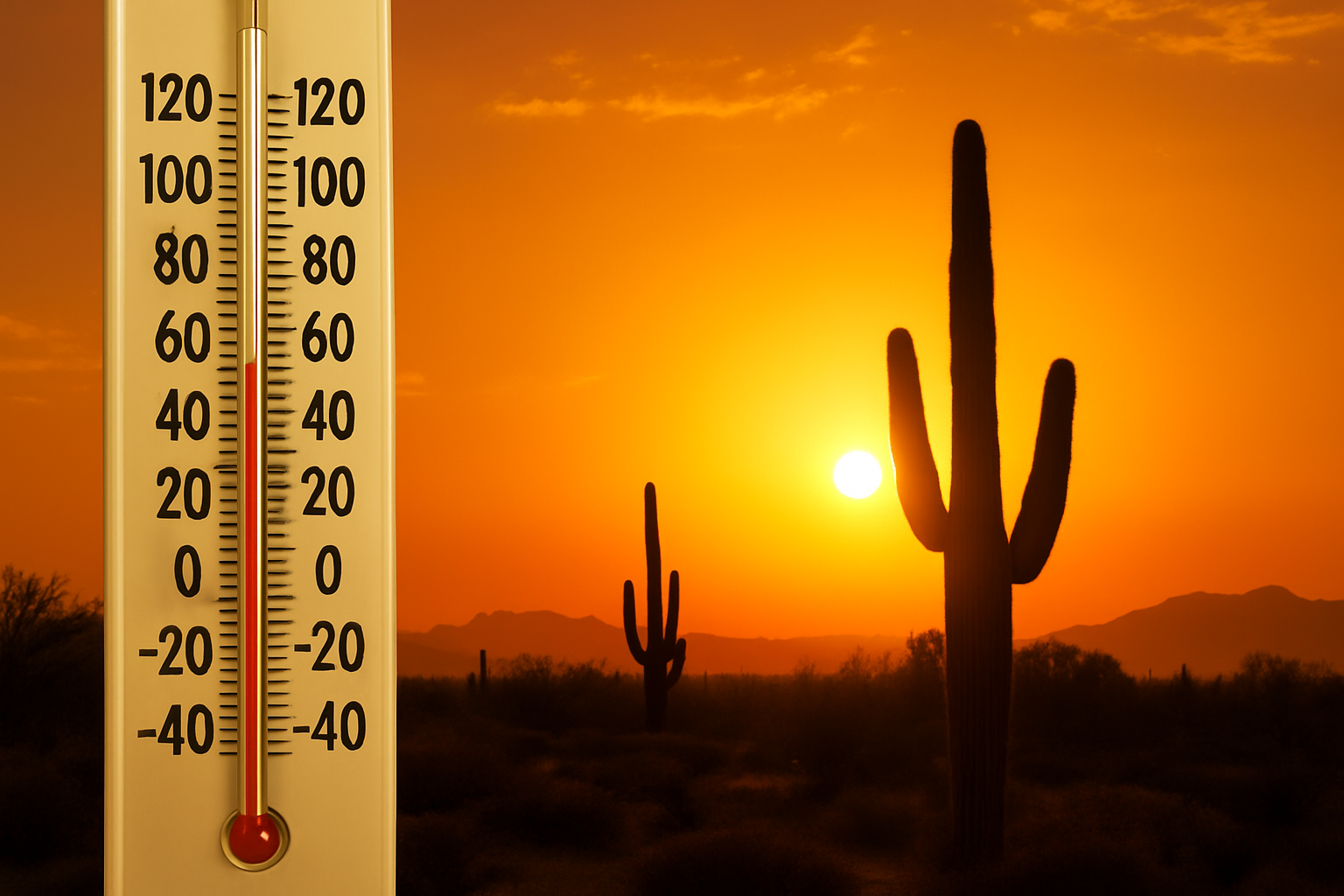Extreme Heat Leads to First Confirmed Heat Death in Maricopa County for 2025
Maricopa County recorded its first confirmed heat-related death of 2025 on June 4, underscoring the growing public health threat as temperatures climb across Arizona this summer. Local officials urge residents to take precautions during prolonged heat waves.
Rising Heat Takes Early Toll on Public Health
The Maricopa County Department of Public Health (MCDPH) reported that an older adult male became the county’s first confirmed heat-related fatality of the year azpha.org+5maricopa.gov+5maricopa.gov+5. This tragic milestone comes amidst ongoing extreme temperatures, with the National Weather Service issuing Extreme Heat Warnings for 12 Arizona counties—including Maricopa—forecasting highs up to 115°F through mid‑June .
Statewide, Arizona averages 4,298 emergency room visits annually due to heat-related illness, and between 2012 and 2023, more than 4,320 heat-related deaths were reported azpha.org+9azdhs.gov+9en.wikipedia.org+9. In 2024 alone, Maricopa County confirmed 608 deaths attributed to heat—the first year-over-year decline since 2014 azpha.org+312news.com+3maricopa.gov+3.
Ongoing Investigations Highlight Scope of Risk
As of the week ending June 7, the Maricopa County Medical Examiner’s office is investigating 63 additional possible heat-related fatalities azdhs.gov+10kjzz.org+10maricopa.gov+10. Health authorities caution that while initial records reflect a single confirmed death, this likely underrepresents the true impact as investigations continue.
Vulnerable Populations Face Higher Stakes
Data from 2024 indicates approximately 76% of heat-related deaths occurred within Maricopa County, with nearly 60% involving individuals aged 50 or older, and around 50% among people experiencing homelessness maricopa.govazfamily.com. Many of these deaths occurred indoors, often in homes with non-functional air conditioning systems, despite their presence maricopa.gov.
Health officials emphasize that older adults, infants, people with chronic illnesses, outdoor workers, and unhoused populations are especially at risk during Arizona summers.
Mitigation Efforts and Public Resources
Maricopa County recently unveiled its 2025 Heat Illness/Death Data Dashboard, designed to provide real-time updates on emergency visits, fatalities, and temperature trends azpha.org. The county also reiterated its Heat Relief Network, launched May 1, providing access to cooling centers, emergency water stations, and outreach services for vulnerable populations maricopa.gov+3maricopa.gov+3azpha.org+3.
Arizona Department of Health Services offers annual guidance to avoid heat illness, including tips like staying hydrated, limiting outdoor activity during mid‑day, and ensuring functional home air conditioning directorsblog.health.azdhs.gov.
Preparing Communities Across the State
Extreme heat warnings remain in effect through at least June 15 for counties including Maricopa, Pinal, Pima, Mohave, Coconino, Cochise, Gila, Graham, Greenlee, La Paz, Santa Cruz, and Yuma azdhs.gov. Officials urge residents in both urban and rural communities to stay alert and utilize public cooling services when necessary.
What Residents Should Know
| Action | Details |
| Cooling Centers | Open in public buildings across Maricopa County—call 2‑1‑1 for locations |
| Heat Illness Prevention | Stay hydrated, avoid midday sun, check on at-risk neighbors and family |
| Symptom Awareness | Recognize heat cramps, heat exhaustion, and heat stroke; call 911 if needed kjzz.org+4maricopa.gov+4azpha.org+4 |
Looking Ahead: Summer Outlook and Resilience
Health experts warn that Arizona’s increasingly severe summers may prolong into October, with sustained high daytime temperatures and dangerous overnight lows. Public health infrastructure must adapt to this reality through continued investment, expanded monitoring, and community education .
The first heat-related death of 2025 is a stark reminder of climate impacts on public health. As temperatures rise, proactive measures—combined with community support—will be crucial to reduce preventable illness and fatalities across Arizona.
